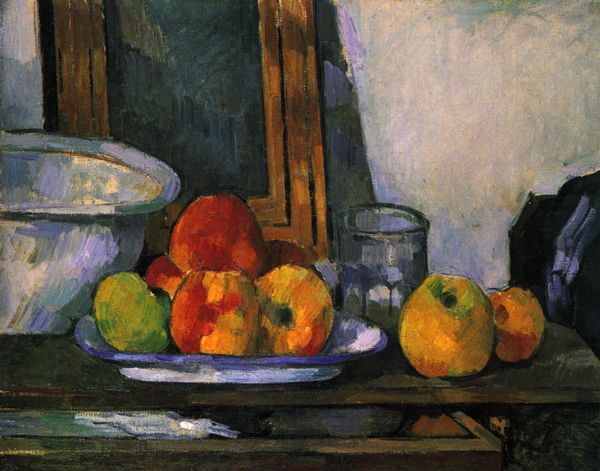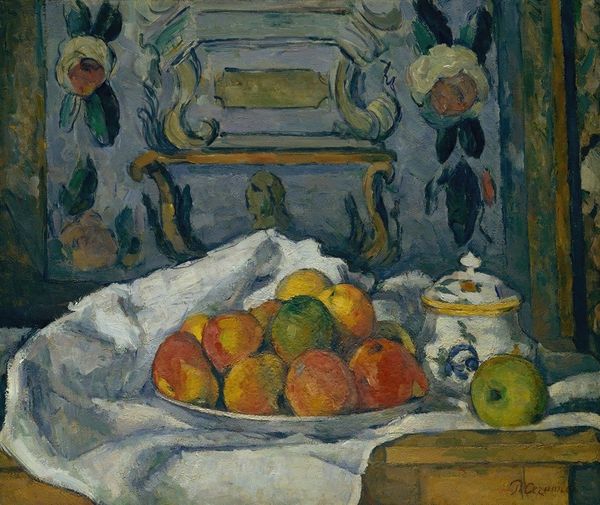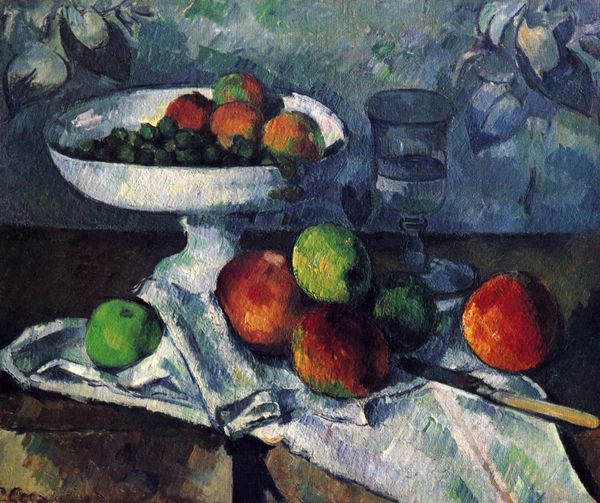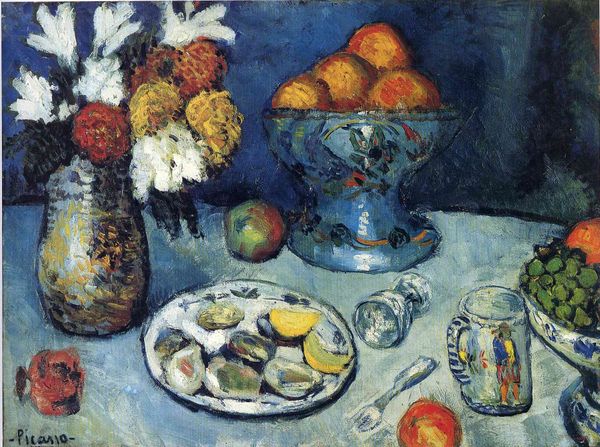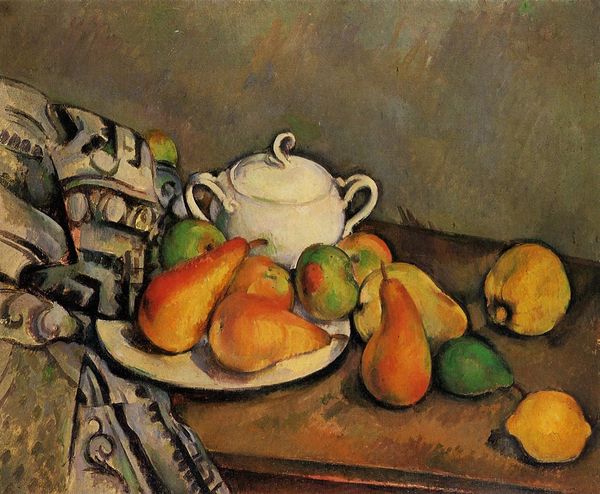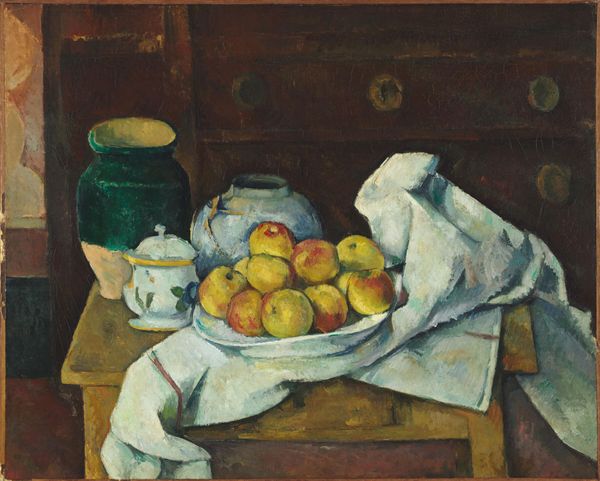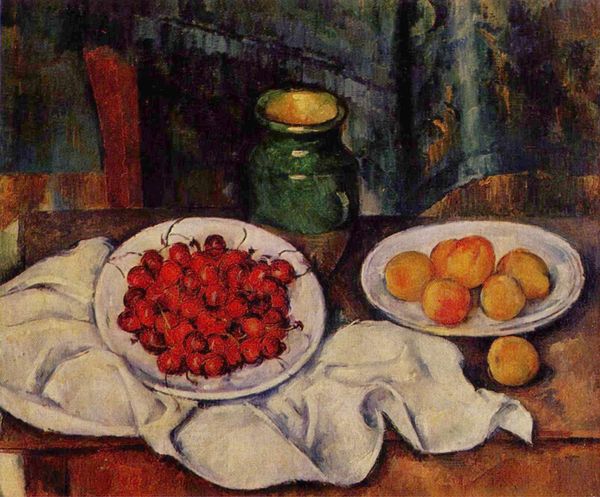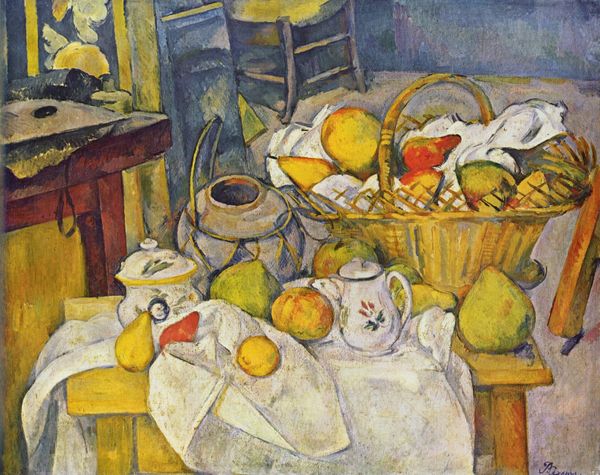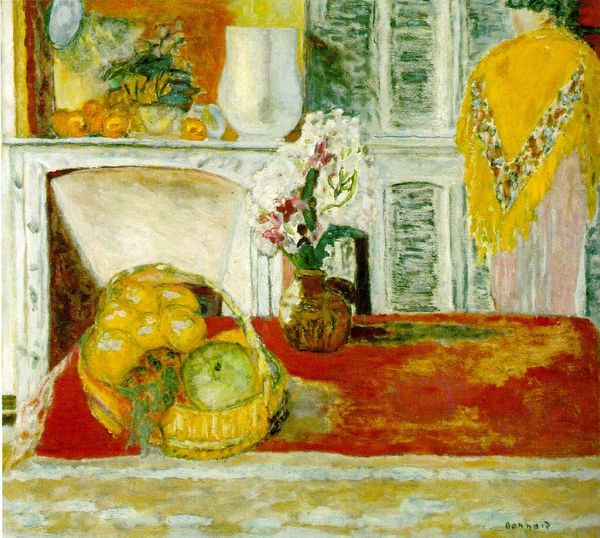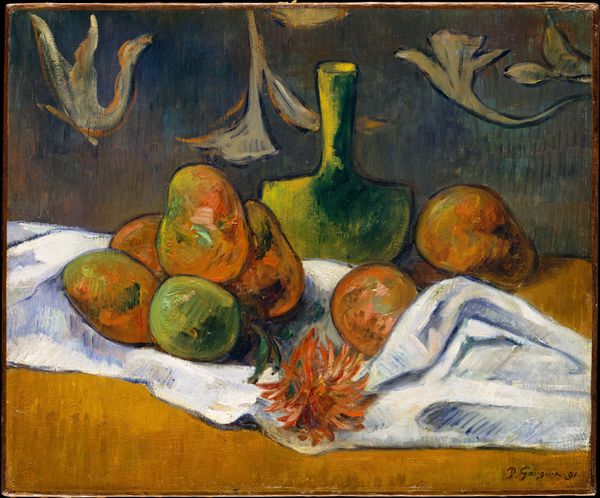
Dimensions: 65 x 81 cm
Copyright: Public domain
Curator: Paul Cézanne’s "The Buffet," created in 1877, presents us with a rather domestic still life. Look closely at how he renders these objects! Editor: Immediately I feel the urge to tidy it all up! The painting's palette is muted, the fruit scattered, the linen slightly crumpled. But then, the colours hum a certain harmony, like objects waiting for their use. Curator: Exactly! Cézanne used oil paint on canvas, building up texture with visible impasto. Think about the role of these everyday objects. Were they easily available, costly? Consumption was clearly becoming a subject for artists at that time, not just luxury displays. Editor: You know, there is something solid, palpable, about it, that I like very much. Each piece seems to exist both in its own right and in collaboration with the others, echoing his way of perceiving depth and solidity on a 2D plane. Curator: Right, and consider his perspective—that tilting tabletop! There’s a subtle challenge to traditional notions of representation here. He focuses more on conveying sensory experience through this arrangement of produced things than simple, mimetic illusion. Editor: It's like he is deconstructing the very idea of a still life! Letting its real forms emerge. Curator: Precisely! It questions artistic conventions about idealising representation and prompts us to reflect upon our own relation with these objects, the social context behind consuming wine, food and table-ware. It's interesting that there's nothing lavish, extravagant, in sight: just simple materials, modest fruits and everyday ware for the table. Editor: I almost smell those oranges! Thinking about his process is rewarding. A lot like life itself! Curator: Indeed. Looking at “The Buffet”, we see much more than just painted objects, we are provided with some means to reconsider everyday material culture.
Comments
No comments
Be the first to comment and join the conversation on the ultimate creative platform.
